Affiliate links on Android Authority may earn us a commission. Learn more.
The Pixel 9 Pro Fold is the least 'Pro' Pixel 9, but I still want to use it everyday
Published onSeptember 3, 2024
I don’t know what I expected when I first held the new Pixel 9 Pro Fold in my hand, but it certainly wasn’t this. On paper, there are a lot of question marks around the “Pro” aspect of this phone, so much so that my colleague Robert called out the branding as a way to hide “spec mediocrity.” And again, on paper, I do agree that this new Google foldable is more of a Pixel Fold 2 than a folding version of the Pixel 9 Pro, as its name would mislead you to believe.
But in reality, this phone feels Pro, even if the hardware specs don’t match that claim all around. Even if all the cameras are underpowered, the IP rating misses on dust ingress, the external display isn’t as bright or doesn’t go lower than a 60Hz refresh rate, the wired charging speed is slow, the wireless charging speed is ridiculously slow, and the phone doesn’t support the same Video Boost prowesses of the Pixel 9 Pro series… even with all of those shortcomings, the Pixel 9 Pro Fold feels like a powerful and premium Pro phone that I just can’t stop picking up, unfolding, folding, and using.
It is the most enjoyable of all the Pixel 9 phones sitting on my desk now and the most unique. This is the first time I’ve looked at a foldable and thought, “Hey, I can use that every day.” More so, it’s the fact that its form factor doesn’t impede its main purpose. The Pixel 9 Pro Fold is a phone first, a foldable second, and a fantastic mix of both.
Comfort and usability are the real ‘Pro’ attributes of a foldable
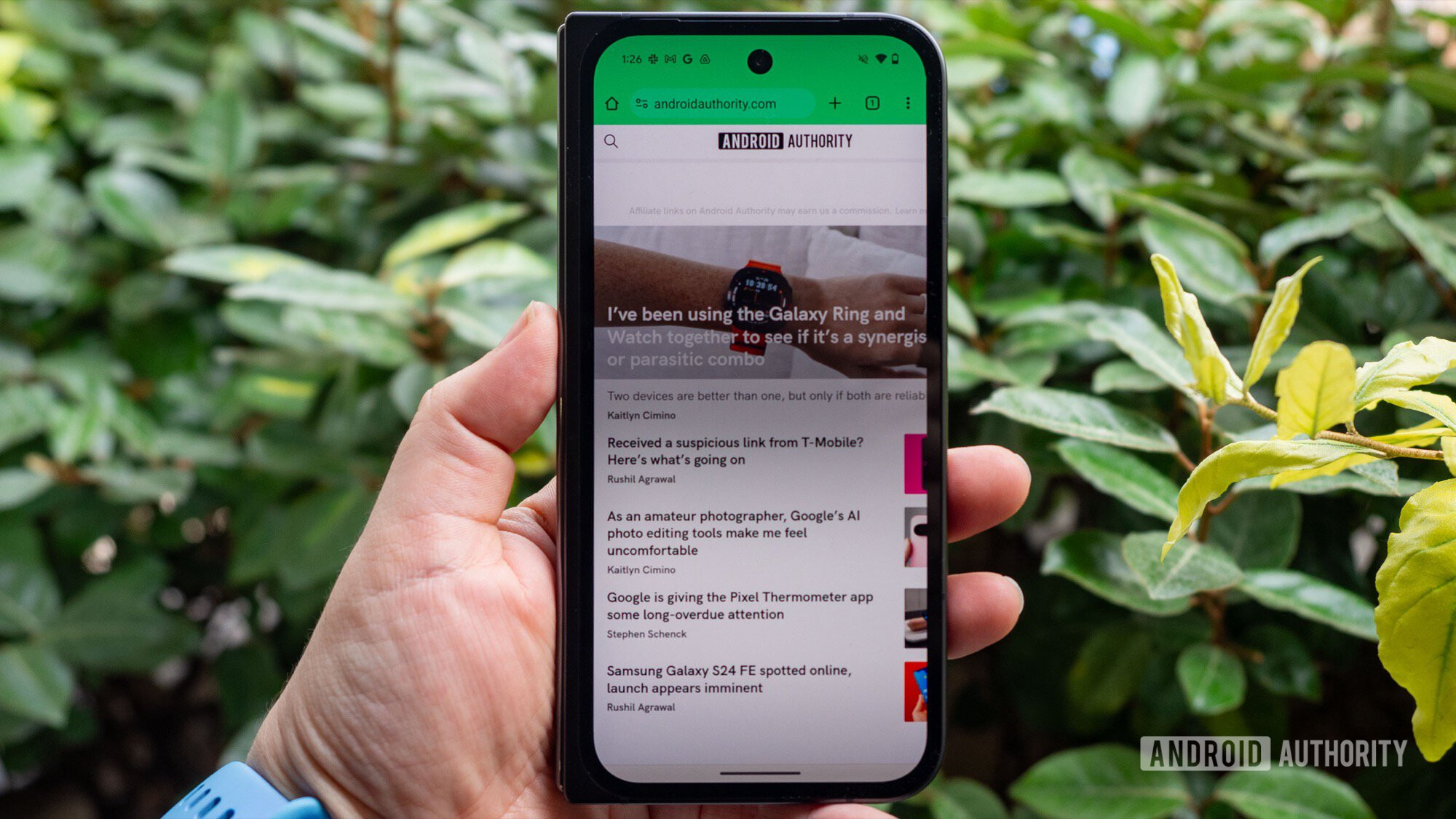
When we looked at the Pixel 9 Pro Fold’s spec sheet and found it underpowered compared to the Pixel 9 Pro and Pro XL, the first mistake we made was to assume that what makes a “Pro” phone is the same thing that makes a “Pro” foldable. My time with the Pixel 9 Pro Fold in my hand has taught me that, no, that’s not the case.
For a foldable phone to be professional and premium, it has to be usable first. I’m not sure why, but when it comes to tech, comfort is the most overlooked yet crucial factor. All of the specs in the world mean absolutely nothing when a phone feels heavy and unbalanced in your palm or when it makes your hand cramp up. Just like all the specs in the world mean nothing when a pair of earbuds or headphones hurt your ears or head.
All of the specs in the world don't matter if a phone isn't comfortable to hold and use — and the Pixel 9 Pro Fold nails both.
The Pixel 6 Pro, for example, felt so unbalanced to me that I found it difficult to use day to day. If I didn’t write about Google, Pixels, and mobile tech, I would’ve returned that phone after three days, max. The Pixel 7 Pro didn’t seem like such a huge departure in design, but its ergonomics were miles ahead, and it was much more enjoyable to hold and use.
Comfort and ergonomics matter even more for foldables, especially book-style ones. These are hefty phones, by design, with two displays and a hinge. They’re heavier and thicker than a normal smartphone, but they have to remain usable unfolded, with one hand. No one wants to carry a foldable that’s impossible to use with one hand or that they have to unfold every time they want to do the smallest thing. For me, that kind of delay before using my phone is a big deal-breaker, just like having to flip open a clamshell foldable or pausing to open a [shudder] leather-style folio case are.
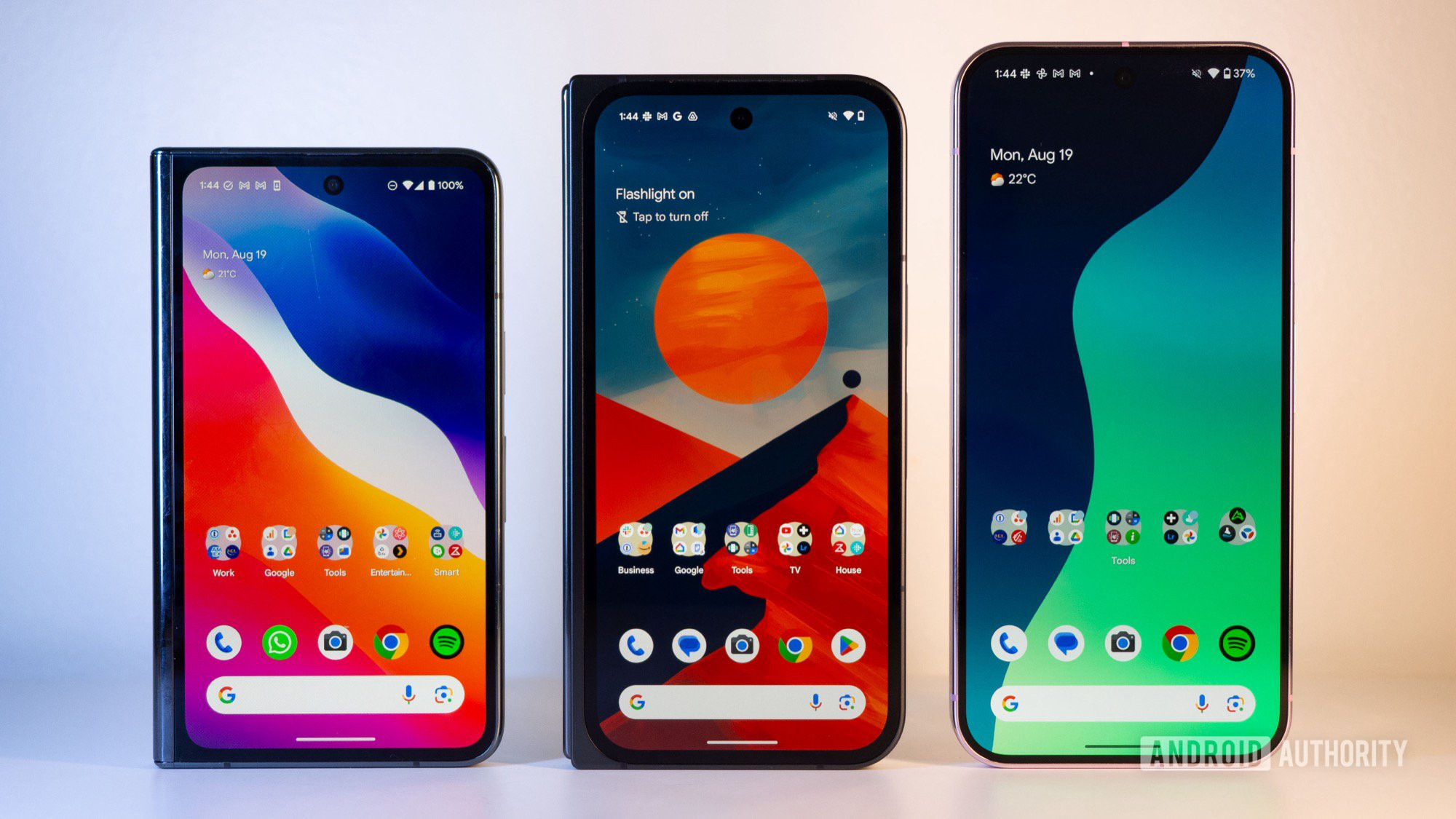
All of this is to say that the Pixel 9 Pro Fold is the most usable foldable I’ve personally held. (And yes, I am aware that there are many, many more amazing foldables coming out of China, but sadly, those aren’t easily accessible to me. I highly respect what they’re doing, though, because they’re the ones pushing the envelope in terms of hardware innovation). Google found the perfect middle ground between the first-gen Pixel Fold’s wide form factor and the Pixel 9 Pro XL’s traditional tall smartphone form factor. The result is a phone I can comfortably hold and an outer display I can easily use with corners I can reach with one hand.
It is barely thicker than the Pixel 9 Pro XL (pictured above) and even sleeker than the sleek Pixel Fold (pictured below).
This is the biggest and most crucial hurdle to clear for any foldable. You can cram all the specs and features, but if it’s not usable as a phone, it’s out of consideration for a lot of people. Now that that hurdle has been cleared, I expect Google to follow up next year with better specs and a more powerful camera.
Solid build quality and sleek finishes
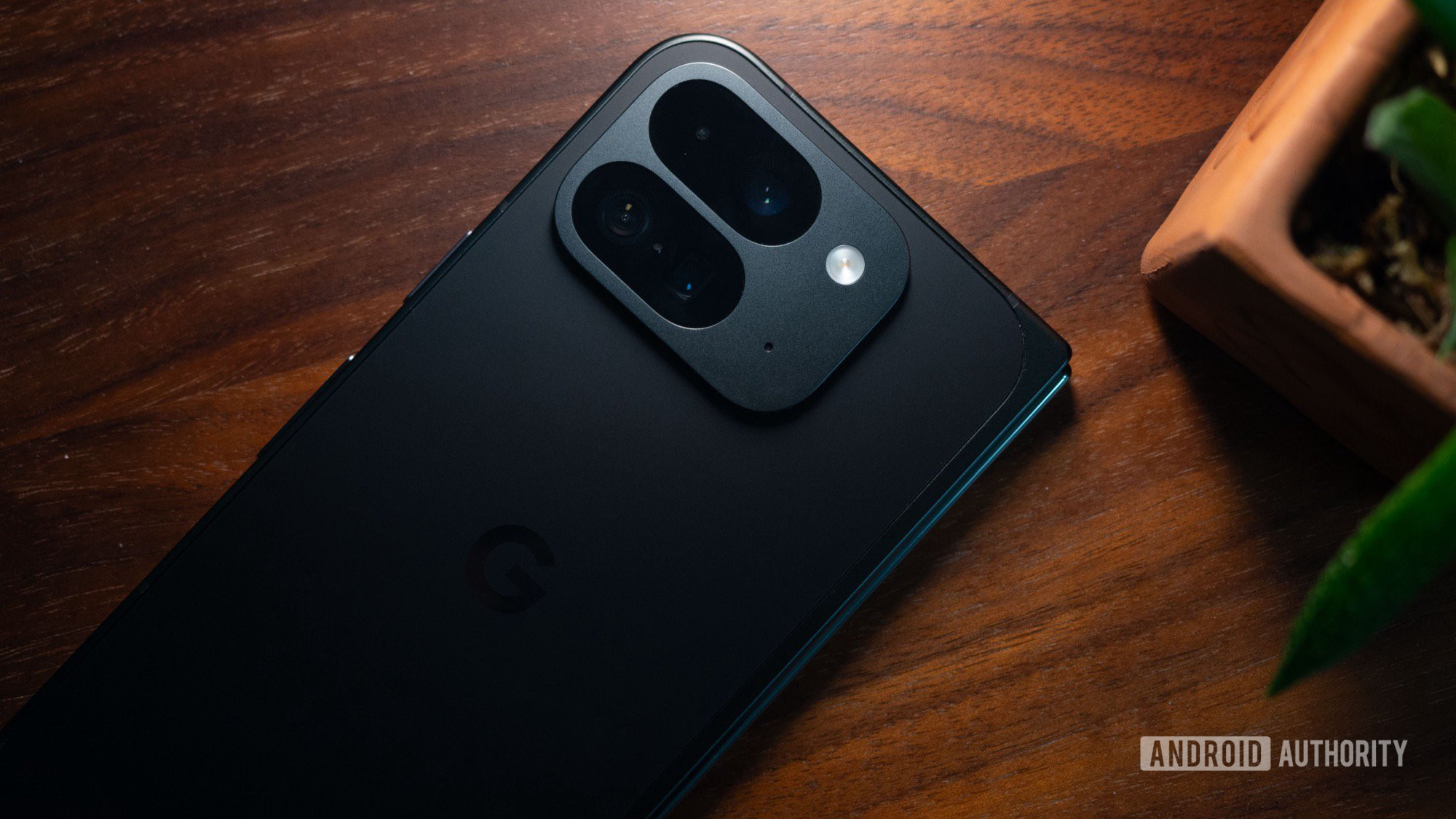
On top of the form factor, the Pixel 9 Pro Fold uses the same exquisite materials and finishes as the rest of the Pixel 9 series phones. You’ve probably read many reviews gushing about how amazing these phones feel (give our Pixel 9 Pro XL review a read for just a taste), and the Fold is no exception.
Everything looks solid and luxurious. The matte back is so soft. The top, bottom, and sides, as well as the camera island, are all matte, compared to the super glossy metal on the Pixel Fold. They’re also flatter than the original Fold’s rounded edges.
Only the hinge has remained glossy, but it seems to have a newer coating that doesn’t attract fingerprints, smudges, and finger gunk just as much.
On top of that, the new Fold now shuts close more tightly, opens flat, and has a less visible crease. The difference is also noticeable during everyday use; my finger no longer feels the valley and bump of the crease each time I scroll across it.
But perhaps the biggest upgrade is in the removal of those thick inner bezels around the display and the shrinking of the visible hinge mechanism. As much as I enjoyed using the original Pixel Fold, I prefer the grown-up and less experimental inner display and design of the Pixel 9 Pro Fold.
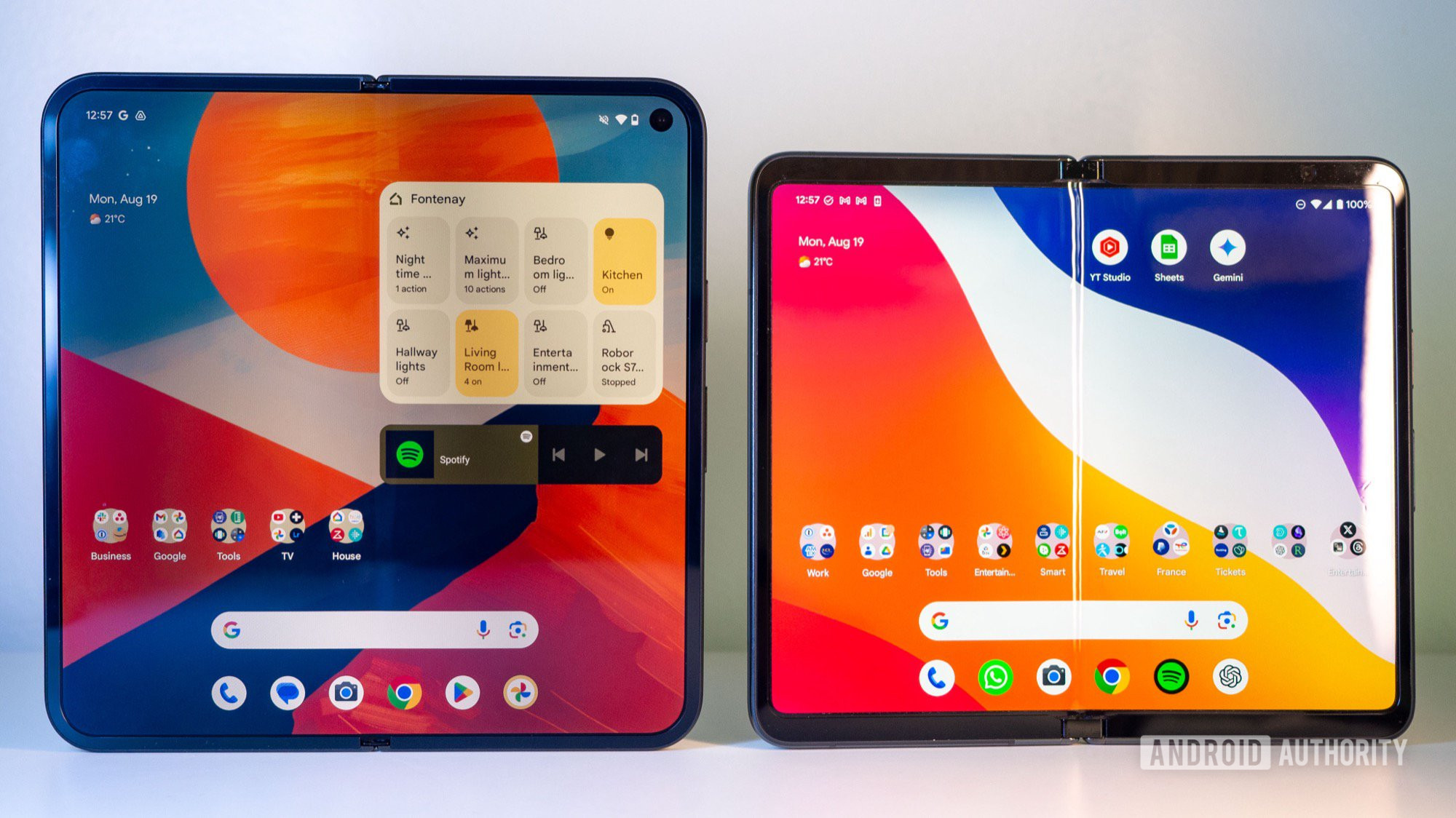
All of this contributes to the “Pro” feeling of this Pixel 9 Pro Fold. If you pay $1,799 for this phone, you won’t be disappointed with its build quality and finishes — something that can’t be said about those who plunked down the same amount for the original Fold.
Android on larger screens is a superior experience
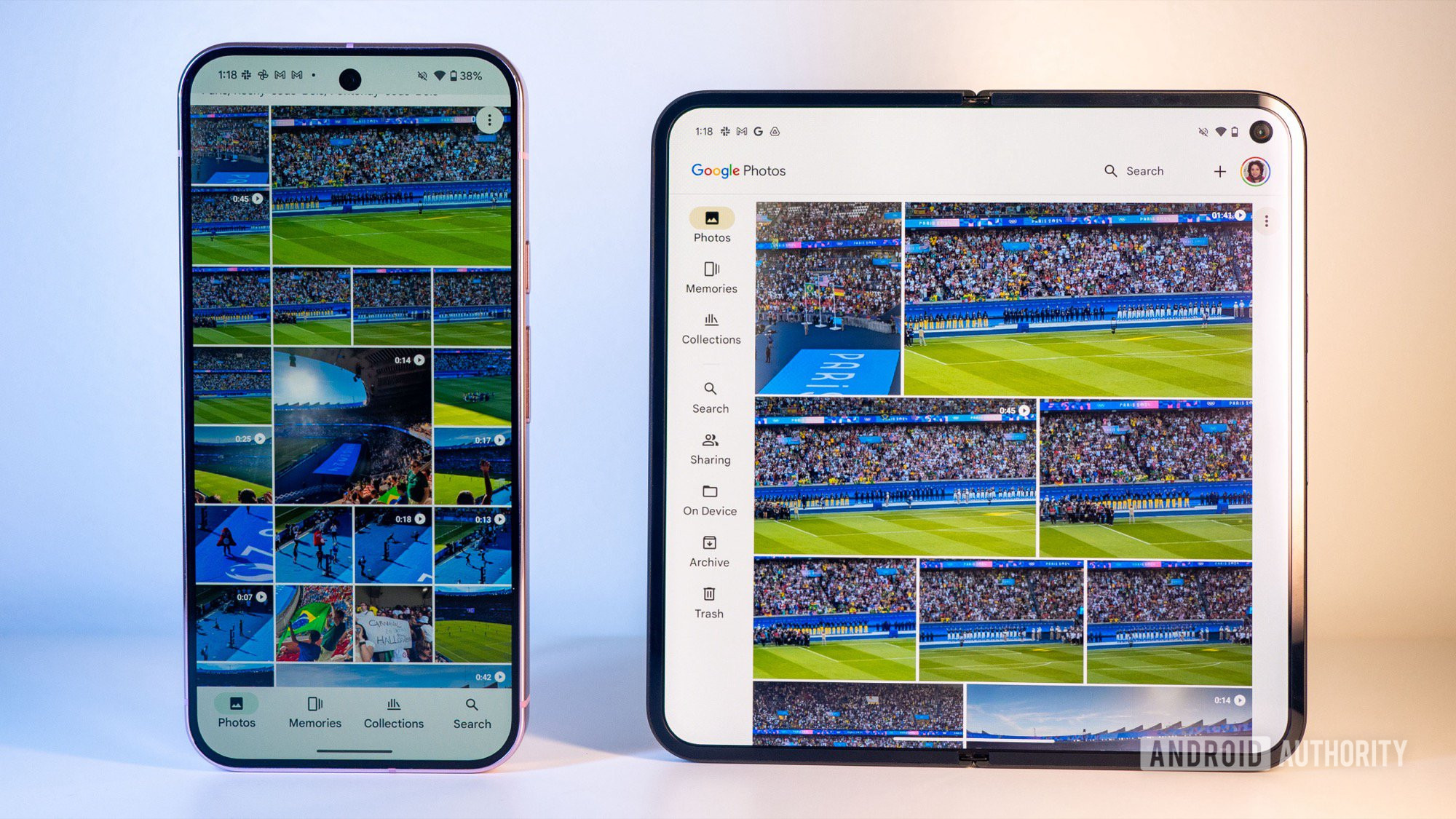
It took a long time for Android to officially embrace the larger screens of tablets and foldables. Now that it has, though, it’s impossible to overlook how superior this experience is. Android features like multi-window and landscape mode that are barely usable on a normal smartphone take a whole other dimension on foldables. At least you can browse Chrome in landscape and use the keyboard at the same time without it covering most of the web page!
Multi-window, landscape mode, app pairs, optimized apps for larger screens; all of these contribute to making Android so powerful on a foldable.
App pairs make the experience even better for someone like me who often jumps between two apps. One of my favorite combos is Google Maps plus Wanderlog for travel planning, but there are other pairs that have slowly become more handy: Calendar and Weather when planning outings, Chrome and Play Store when digging for news Android apps and games, Slack and Asana when doing some Android Authority work, and so on. Watching YouTube while using other apps to chat or give feedback is so easy; I’m just glad I don’t have to swipe left and right between apps anymore or use the tiny floating YouTube window.
Plus, apps that have gone through the effort of optimizing their interface for large screens are much nicer to use on a foldable. Spotify? Better. Google Maps? Better. Todoist, WhatsApp, Google Photos, Google Home, Instagram, Plex, etc…? Better.
Even apps that aren’t optimized for larger screens no longer show the silly wide black bars on both sides. Whether I open the Pixel 9 Pro Fold in portrait (book-style) or landscape (laptop-style), most apps seem to fill most of the display, stretching beyond what they did on the original Pixel Fold. You can see this with the unoptimized Fever app below which only filled 50% of the display on the Pixel Fold.
And if that’s not enough, there’s the aspect ratio setting that lets you force-stretch apps to fill the entirety of the display, regardless of orientation.
Stock Android still has a way to go to reach the customizations and features of third-party Android skins. For example, I’d love to have separate homescreen setups for the outer and inner display or the superior multitasking experience of the OnePlus Open. But the stock experience has come a long way in the last few years, and it’s now very usable on a foldable.
Photography isn’t the Pixel 9 Pro Fold’s strong suit
Taking photos with the Pixel 9 Pro Fold feels a bit like winding up the time machine and using the Pixel 6 Pro or 7 Pro. You still get some very decent shots out of the camera, but a lot of the newer tricks and more powerful lenses are missing. For a workhorse machine, the camera does the job, but it’s clear that many other brands like OPPO, vivo, and HONOR are far ahead in the foldable photography game. We’ll have more to say about this in our full review of the phone, but until then, here are some samples for you to check out.
Oh and yeah, it does have the all-new panorama mode.
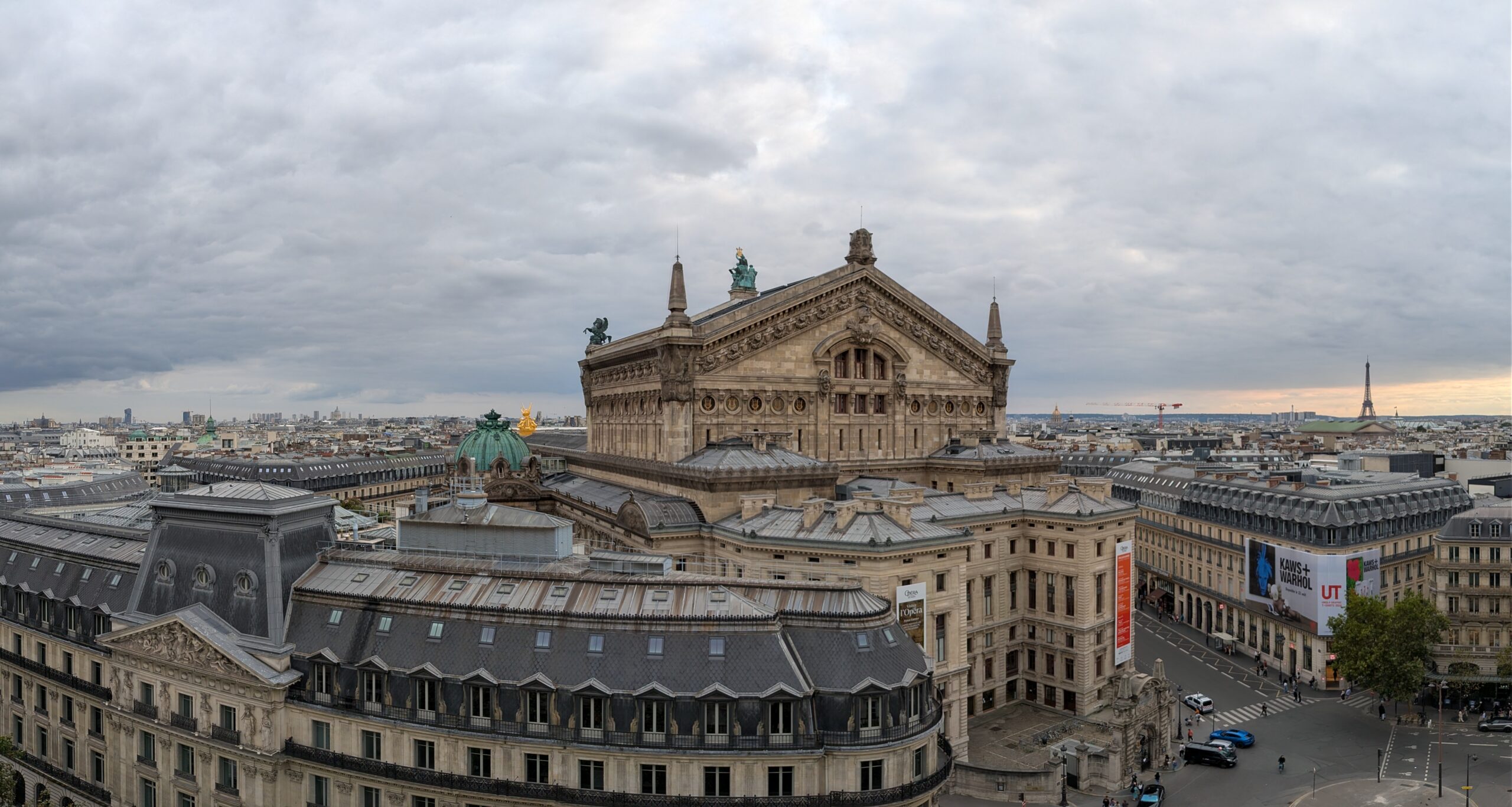
For now, my heart is a bit torn between my love for photography and pushing the boundaries of what I can capture on a phone on one hand and the limits of the Pixel 9 Pro Fold’s lenses — especially the telephoto one — on the other hand. If I didn’t take a lot (really, a lot) of zoomed in pictures in my everyday life, this would be my main phone, no questions asked. The Android experience on it is much nicer than a regular smartphone, and it’s built well enough to be as usable and comfortable as a regular smartphone. But as it stands with the camera limitations, I’m very undecided. The next few weeks will be crucial to me as I discover, first-hand, which aspect of my smartphone experience I appreciate more: camera or power?
Still, it’s clear that Google is on the correct path here. After what felt like a fun — albeit expensive — experiment with the first Pixel Fold, the Pixel 9 Pro Fold is a real contender among the best foldables on the market. Well, at least in the US and Western markets.

